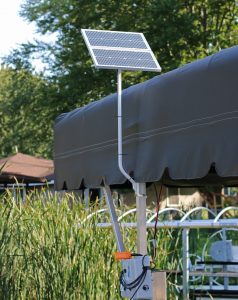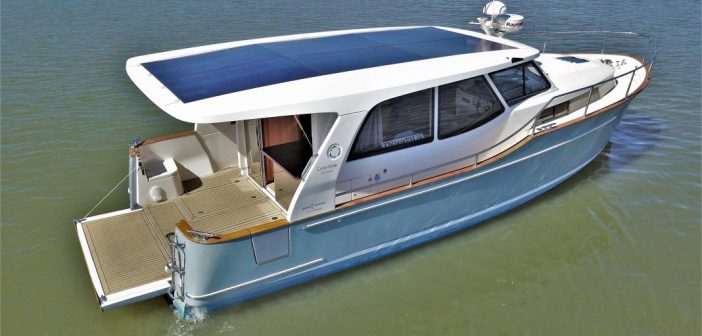Here’s some very good advice, from Brad Roberts at Power Boating Canada, about how to put solar power on your boat. Some basic and easy-to-understand information here:
A DIY real-life solution to your power issues.
By Brad Roberts

I was first introduced to solar power by a boater friend in our marina. This was many years ago, and solar has come a very long way since then, but he had a small rigid solar panel laid on his helm under the windshield and connected directly to his batteries. It worked, admittedly crudely, as a trickle-charger. So I put one on our express cruiser and noticed a measureable difference in how long our house batteries lasted when we were out cruising. So much so that my kids commented “how come you’re not telling us the batteries are down, Dad?”
I figured there had to be something to this that was worth exploring further. I’ve invested time over the past decade researching what can be a complicated and confusing industry, and now for the past two years, I’ve been using solar power on my boat and up at our cottage in Central Ontario. This article is a basic introduction to solar power meant to get you thinking about how this green energy solution might benefit you and your family’s boating or cottaging.
In the simplest terms – solar power refers to the process of capturing the sun’s energy and storing it in a battery that will later be used to power an electric tool or appliance. As opposed to getting the hydro that your home appliances need from “the grid” (and paying for it by the kilowatt), you get it from a renewable (and free) source – the sun. There are five essential components to any solar system, that all have to work in harmony with each other for the system to function properly: your power needs, the inverter, the storage capacity of the batteries, the charge controller, and the production capacity of the solar panels. To correctly size your solar system, you should work backwards from your actual power consumption.
Power Needs. To determine how much power you need from your solar system, you have to add up the watts that each appliance on your boat uses, per day. So a coffeemaker run for 30 minutes in the morning uses “X” number of watts, the stereo on for three hours in the afternoon uses “X” watts, the microwave at dinner, the TV and cabin lights at night, etc. Add it all together and you get a total number of kilowatts (1 kW = 1,000 watts). You may have done this already to size your house batteries correctly for your boat. Read more:
https://powerboating.com/diy-the-solar-solution/




